The Ancient Egyptian language, one of the world’s oldest recorded languages, evolved over 4,000 years through six stages: from Archaic Egyptian to Coptic. As a member of the Afro-Asiatic family, it shares roots with Semitic and Berber languages. Its writing progressed from hieroglyphs to hieratic, demotic, and finally the Coptic alphabet. Rich in morphology and grammar, it reflected Egypt’s cultural and political shifts. Though no longer spoken, it endures in Coptic Church liturgy and offers deep insights into ancient Egypt’s society and beliefs.
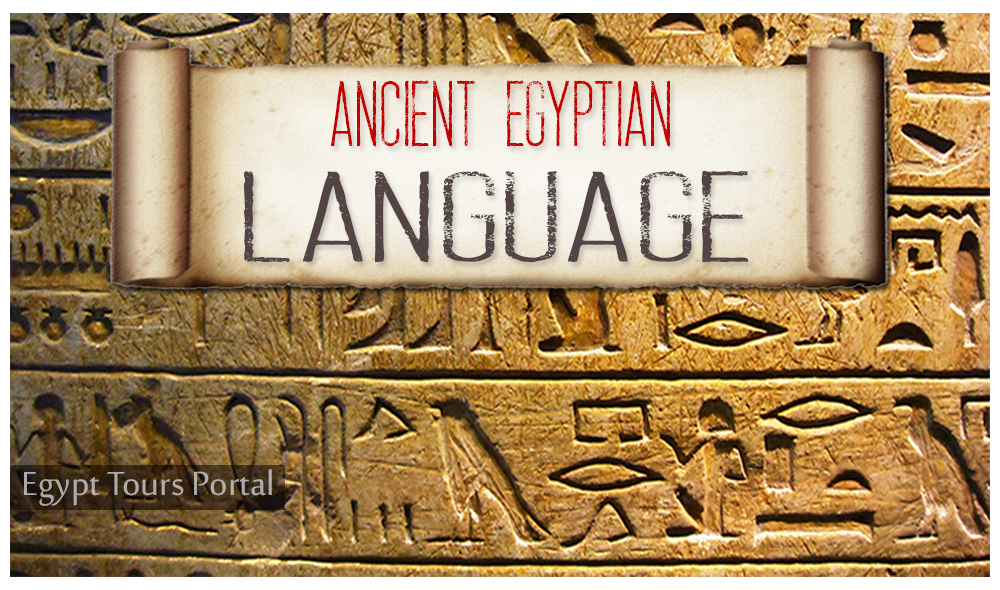
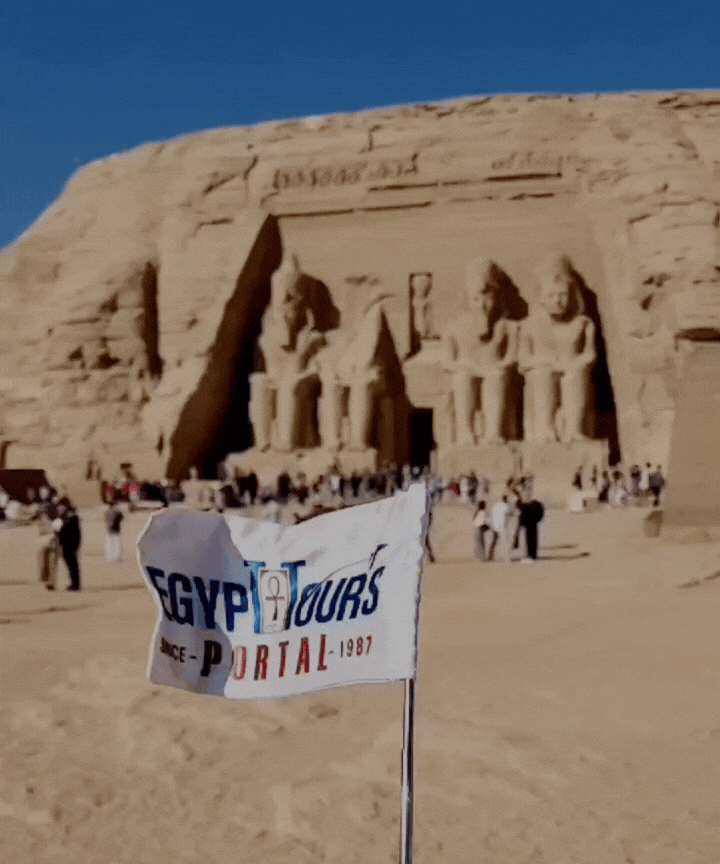
Ancient Egyptian language is the oldest indigenous language and is considered to be a branch of the Afro-Asiatic languages. It is related to the Berber and other Semitic languages such as Arabic, Amharic, and Hebrew. It is one of the oldest recorded languages known alongside Sumerians. Its first known records date back to the mid-3rd millennium BC during the old kingdom of Egypt in 3400 BC, it was in use in the form of demotic and until the 17th century in the middle ages in the form of Coptic. The language was accompanied by hieroglyphs which became the official writing system. The national language of modern-day Egypt has become Egyptian Arabic which has taken over after the Muslim conquest in the 7th century.

The Ancient Egyptian language is one of the oldest known written languages, with origins tracing back to the early Afro-Asiatic language family. By the late 4th millennium BC, Egyptians emerged in written form, marking the beginning of recorded history in Egypt. Early inscriptions, seen in temple walls, royal tombs, and artifacts, demonstrate an evolving language influenced by the Nile River's geographic environment and Egypt’s interactions with neighboring African and Near Eastern cultures.
The initial hieroglyphic system appears to have been inspired by local flora, fauna, and daily life symbols, eventually developing into an intricate script system. While the language developed in relative isolation, the Afro-Asiatic characteristics remained, with similarities in grammar, vocabulary, and sounds linking it to other languages in the family. Ancient Egyptian origins reveal a linguistic journey that spans over 4,000 years, chronicling the civilization’s cultural and historical changes.

The transformative history of the ancient Egyptian language can be divided into six major chronological parts:
It is the reconstructed language of the early dynastic and the late predynastic period. It also contains the earliest examples of Egyptian hieroglyphic writings on many works of art like Naqada II pottery vessels.
It became the official language of the old kingdom and the first intermediate period as it was used to write the pyramid texts which are the largest body of literature written in this language and was used to showcase the autobiographical writings representing old Egyptians. It is characterized by the tripling of ideograms, phonograms, and determinatives to indicate the plural.
It became known as Classical Egyptian as it was used to create a variety of textual writings in hieroglyphics and hieratic scripts that include various funerary texts like the coffin texts and wisdom texts that act as a guide on how any person can lead a life to symbolize the ancient Egyptian philosophical worldview.
It was also used to tell the adventurous tales of certain individuals, medical and scientific texts such as Edwin Smith's papyrus, and the poetic texts of certain ancient Egyptian gods or ancient Egyptian pharaohs. The language was so powerful and very common within the public; that the Egyptian dialect began to change to match the classical middle Egyptian. The grammatical structure of this language doesn't differ much from the language of the old kingdom.
This language appeared in Egypt's new kingdom which is considered to be the golden age of ancient Egyptian civilization. It contained many rich religious passages and secular literature and various classicisms appeared in historical and literary texts during this period. The difference between the middle languages is far bigger than the middle and the old. It also offers a perfect example of the spoken language. It also saw a massive expansion of its graphemic inventory by the hieroglyphic orthography.
It is a name of the ancient Egyptian vernacular of the Late and Ptolemaic periods. It has been used for more than 1000 years. The word demotic is derived from the northern forms of hieratic (writing system) used in the delta. It had three stages during its time:
It was developed in Lower Egypt between 650 and 400 BC as most texts were written in the 26th dynasty and the following Persian period. The demotic language was used for administrative, legal, and commercial passages and texts.
It is a stage of writing that was massively used for literary and religious texts. At the end of the third century, Greek was used as an administrative language of the country.
Greek became the semi-official language texts, religious texts, mummies, and graffiti-like the ones on the walls of the temple of Isis on Philae that you can visit during your trips to Egypt and demotic began to disappear but there are several literary texts from the first and second centuries AD but unfortunately, most of the demotic texts decreased after the rise of greek.
The Coptic language is the final phase of transformation as it is the last direct descendant of the ancient Egyptian language. Despite the fact that the language can be written in Egyptian hieroglyphics and demotic scripts, the Coptic alphabet was highly modified by the Greek alphabet. The language became the official language of the land from 200 AD to 1100 AD and the last record of it being spoken was during the 17th century.
The language was able to survive thanks to the European scholars who learned it from the native speakers during the Renaissance and can only be found today as a liturgical language of the Coptic Orthodox Church. Egypt has elevated the process of cultural transformation to whole new levels.
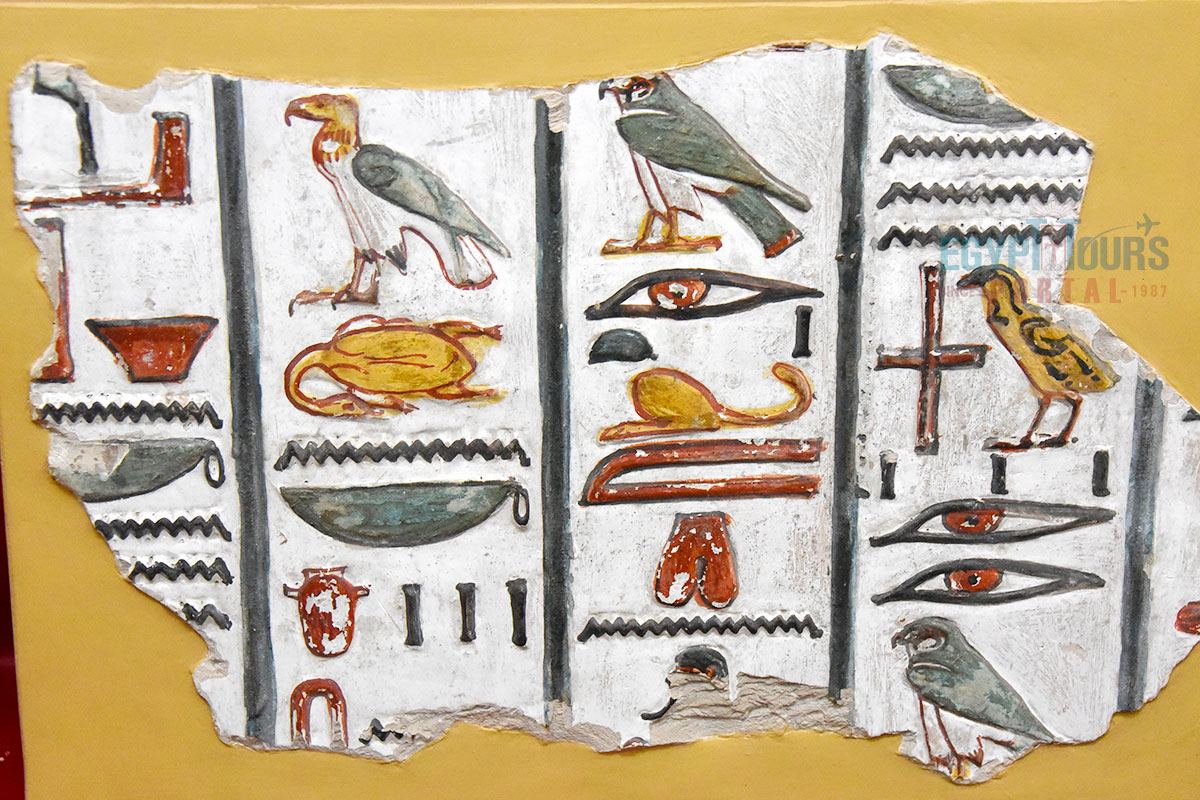
Ancient Egyptian morphology was a complex, structured system reflecting its Afro-Asiatic language roots. At its core, Egyptian morphology relied on consonantal root structures, typically with two or three consonants, to form words and convey meaning. Through various prefixes, suffixes, and infixes, these roots took on different grammatical roles, such as nouns, verbs, and adjectives. Nouns were gendered, either masculine or feminine, with feminine nouns typically marked by the suffix "-t" (similar to other Afro-Asiatic languages like Arabic).
For instance, the word for "goddess" was ntrt, the feminine form of ntr, meaning "god." Pluralization was another significant morphological feature, indicated by adding "-w" or "-wt" to nouns, whereas a dual form also existed, marked by endings such as "-wj" or "-tj." Verbs were conjugated to express tense, aspect, and mood, using modifications to the root or by adding affixes that represented the subject.
This structure gave Ancient Egyptians a highly inflected, dynamic linguistic system that evolved, adapting as spoken language changed and as new scripts developed to reflect these intricate morphological patterns.

The Ancient Egyptian written language evolved through multiple script forms over its long history, each with unique uses and purposes. The earliest script, hieroglyphic, appeared around the end of the 4th millennium BC and was primarily reserved for religious texts, monumental inscriptions, and official records.
Hieroglyphs were a combination of ideographic symbols, representing ideas or objects, and phonetic symbols, representing sounds. Around the same time, a cursive version known as hieratic emerged for daily purposes, which was more efficient for scribes to use on papyrus or ostraca. By the 7th century BC, Demotic script developed as a further simplification of hieratic, serving as a practical and accessible writing system used in literature, business transactions, and administrative records.
The final phase of written Egyptian was the Coptic alphabet, which adapted Greek letters to represent Egyptian sounds, filling in with Demotic signs where Greek lacked equivalents. Coptic became the primary script of Egyptian Christians and was used for religious texts until the spread of Arabic writing following the Muslim conquest. Through these stages, written Egyptian reflects a fascinating trajectory of cultural and linguistic transformation.
Discover the incredible Hieroglyphics and written languages of the ancient Egyptian civilization
Read More
The spoken form of the Egyptian language evolved considerably over thousands of years, reflecting changes in pronunciation, vocabulary, and grammar. Linguists divide spoken Egyptian into several main stages: Old Egyptian, spoken during the Old Kingdom; Middle Egyptian, the vernacular of the Middle Kingdom; Late Egyptian, which emerged in the New Kingdom; and the later stages of Demotic and Coptic. Each phase marked shifts in the language’s structure and phonology, though it retained a core Afro-Asiatic foundation.
By the Coptic period, written Egyptian began including vowels, providing a closer approximation of spoken language. Regional dialects became increasingly pronounced, especially between northern and southern Egypt, as seen in Coptic texts, where distinct dialects like Bohairic in the north and Sahidic in the south emerged.
The richness of the spoken language over time reveals a dynamic interaction between the Egyptian people and their language, adapting to new cultural influences yet preserving ancient roots, a quality that allowed Egypt to endure as one of the oldest known languages.
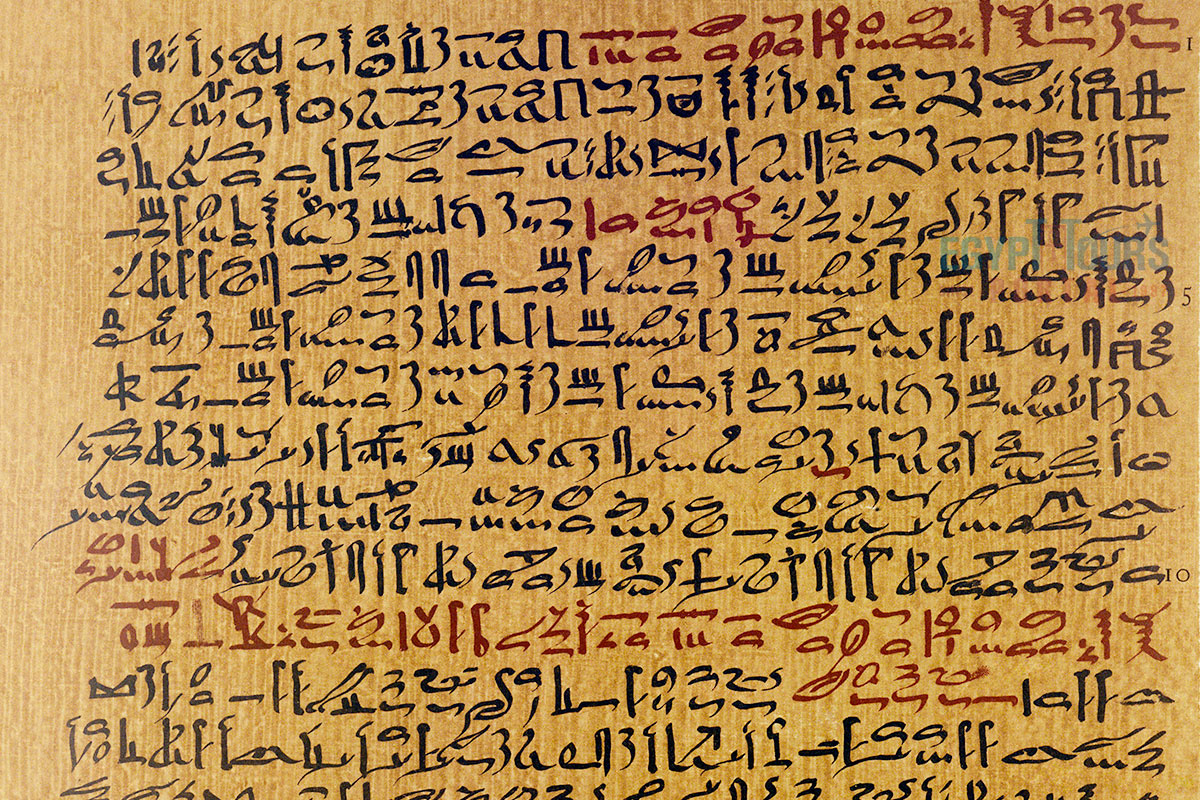
The characters in Ancient Egyptian hieroglyphic writing included ideograms, phonograms, and determinatives. Ideograms represented whole ideas, such as a bird symbolizing flight or freedom, while phonograms represented sounds, creating phonetic combinations that allowed the writing of complex ideas.
Determinatives were non-phonetic symbols placed at the end of words to clarify meaning, especially for nouns that could be interpreted in multiple ways. Over 700 hieroglyphic characters existed, with each symbol often carrying layered meanings and cultural significance. The character set remained consistent for centuries, reflecting the Egyptians' deep respect for tradition and stability.
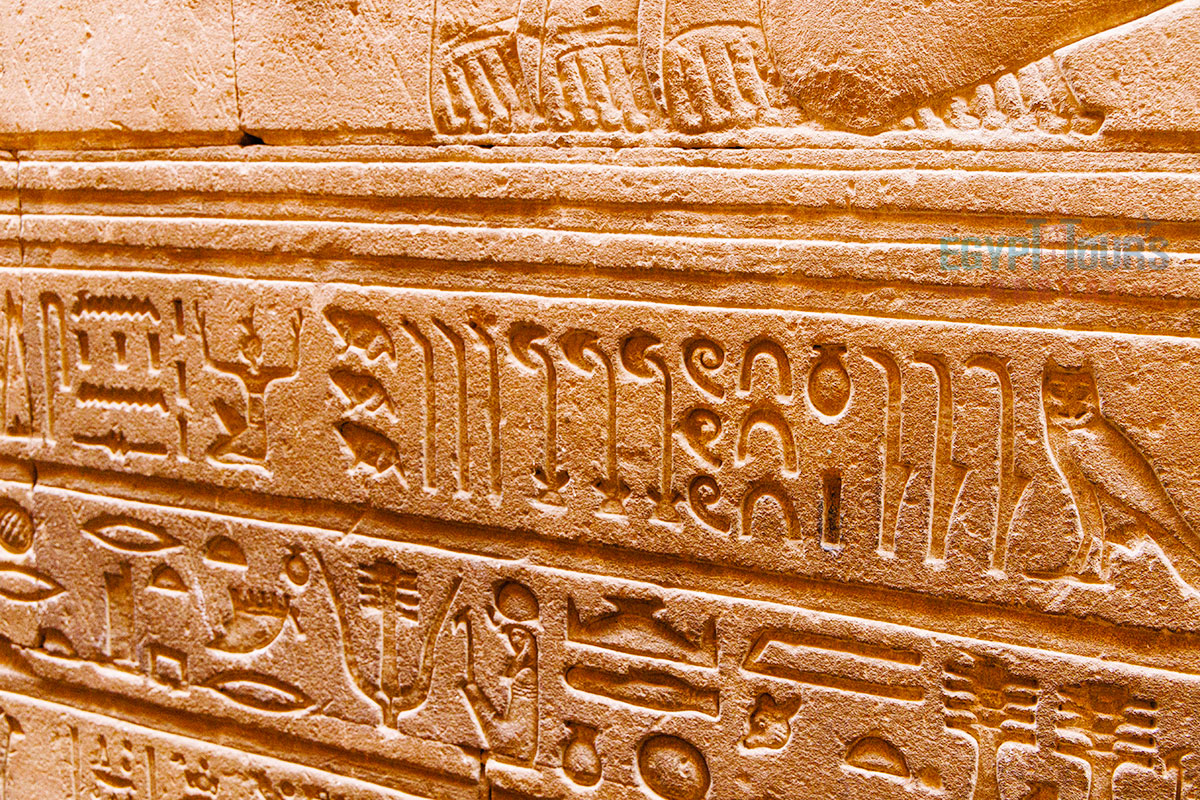
The Ancient Egyptian language has a culturally rich and informative glossary that explores keywords that highlight their linguistic roots, cultural significance, and societal roles. Each word shown here explains how specific terms were written and used, while also revealing their deeper meanings about mythology, daily life, and religious beliefs.
The language was deeply intertwined with the Ancient Egyptians’ worldview, spirituality, and identity. The following example words illustrate how the Ancient Egyptian language was both a means of communication and a reflection of the civilization’s values, cosmology, and way of life.
Here they are:
In Ancient Egyptian, the word for "cat" was miu or miw, a term that may mimic the sound of a cat’s meow. Cats held a special and almost sacred place in Egyptian society, symbolizing grace, protection, and mystique. They were closely associated with the goddess Bastet, the deity of home, fertility, and protection, who was depicted as a lioness or as a woman with a cat’s head.
Cats were revered for their role in protecting homes from pests, and many Egyptian families kept them as pets. Killing a cat, even by accident, was considered a grave offense, sometimes punishable by death, further underscoring the animal's esteemed status.
The concept of "love" in Ancient Egyptian was expressed with the word mer (mri), which could refer to various forms of affection, including romantic love, familial bonds, and divine devotion. Love was an essential theme in Egyptian poetry, inscriptions, and art, often depicted in beautiful verses that captured deep emotions.
Romantic love poems from the New Kingdom era, inscribed on papyri, celebrated the joys and sorrows of love, showing the Egyptians' appreciation for human relationships. The term could also be found in relation to gods, signifying reverence and a kind of spiritual love, indicating that the Egyptians viewed love as both a personal and universal force.
The Ancient Egyptian term for "sun" was Ra (rꜥ), which was also the name of the sun god, a central deity in Egyptian mythology. Ra was believed to journey across the sky each day, symbolizing life and energy, and at night, he traversed the underworld, fighting darkness and chaos to rise again. The sun was central to Egyptian cosmology and daily life, as it provided warmth, light, and life to the land.
Ra’s importance extended into various creation myths, and pharaohs often claimed to be “sons of Ra,” associating their rule with the god’s life-giving powers. Thus, the word Ra carries meanings beyond the literal sun, representing divine power and continuity.
The word for "light" in Egyptian was akhet, which also symbolized the horizon or the dawning sun. Light held deep significance in Egyptian mythology and was associated with Ma’at, the concept of truth and order. It was seen as a gift from the gods, an illumination that brought clarity and purity.
Temples and tombs often had openings that allowed the sun’s light to enter at specific times of the day, symbolizing divine presence and blessing. In a broader sense, light represented guidance, protection, and the constant battle against darkness, with each day’s sunrise seen as a victory of order over chaos.
The Nile River was the lifeblood of Ancient Egypt, referred to as H’pi or Iteru. Named after the river god Hapi, the Nile symbolized abundance, fertility, and divine provision, as its annual flooding deposited nutrient-rich silt essential for agriculture.
The river was central to Egyptian identity, not only as a water source but also as a sacred entity that nourished both land and people. Its waters were believed to flow directly from the gods, making the Nile a bridge between earth and the divine realm. Pharaohs often led ceremonies and made offerings to Hapi to ensure the Nile’s continued blessings, underscoring the river’s cultural and spiritual significance.
Ancient Egyptians had a deeply spiritual view of the sky, personified by the goddess Nut (Nwt), who arched over the earth to protect it. They considered the stars and celestial bodies as "friends" or companions to Nut and the gods, lighting the heavens each night as symbols of divine guardianship.
Pharaohs, upon death, were often believed to join the stars as eternal companions of the gods, illustrating the Egyptians’ view of the heavens as a divine space of unity. This celestial community of "sky friends" embodied the Egyptian belief in an interconnected universe where gods, nature, and humanity coexisted harmoniously.
The word for "dog" in Egyptian was iwiw, a sound possibly imitative of barking. Dogs were esteemed as loyal protectors and often served as hunting companions, guardians, and pets. They were linked to the god Anubis, the deity of embalming and the afterlife, who was depicted as a canine or a man with a jackal’s head.
Anubis’ association with dogs highlighted their role as guardians, not just in life but also in the journey to the afterlife. Dogs were given affectionate names, and some were buried with honor, emphasizing the Egyptians' high regard for these animals.
In Egyptian iconography and everyday life, ducks were a symbol of abundance and fertility. Ducks, known as pa-shemsu, were often depicted in scenes of agriculture and banquets, symbolizing prosperity and sustenance. They frequently appeared in tomb paintings and reliefs as offerings to the gods or as part of scenes showing the ideal afterlife.
Ducks and other waterfowl were common in Egypt due to the Nile, which supported a vibrant ecosystem. Their representation in Egyptian art and writing reflected the importance of agricultural abundance and nature’s gifts in sustaining life.
Birds held a multifaceted role in Ancient Egyptian culture and language, symbolizing freedom, divinity, and communication with the heavens. Different bird names had specific meanings, such as ba, which represented the soul and was depicted as a bird with a human head. Birds like the ibis (hbj) symbolized wisdom and were associated with Thoth, the god of knowledge.
Geese (gb) represented fertility and were connected to earth and agriculture. Through hieroglyphs and art, birds embodied various divine attributes, showing the Egyptians' reverence for creatures that connected the earthly and celestial realms.
The family was a central value in Ancient Egyptian society, represented linguistically by terms like msyt, which conveyed kinship and lineage. The Egyptians believed in strong familial bonds that extended beyond life, as they often referred to the deceased as continuing to care for and protect their living relatives.
Inscriptions often referenced one’s family lineage and connections to both mortal ancestors and divine beings. Family was not only a social structure but also a spiritual one, tying individuals to their heritage, culture, and religion, and was an essential theme in tomb inscriptions and religious texts.
The term for the world or universe in Ancient Egyptian was ta or ta-wy, meaning “the two lands,” a concept that unified Upper and Lower Egypt as one whole. The ancient Egyptians believed their land was the center of creation, ordered and protected by gods, with the outside world often seen as chaotic.
The Ancient Egyptian understanding of the creation of the world extended to cosmology, where the earth was seen as part of a larger universe governed by gods like Geb, Nut, and Ra. This perception of the world as divinely ordered provided a foundation for their culture, mythology, and daily practices.
The Ancient Egyptian term for fire was khet (ḫt), which represented both physical fire and symbolic power. Fire was viewed as a purifying force, used in rituals and sacrifices to honor the gods and cleanse spaces of impurity.
It symbolized divine power, transformation, and rebirth, closely associated with deities like Sekhmet, the lioness goddess of war, who could bring both destruction and healing. Fire’s duality as a force of creation and destruction made it a vital element in the Egyptian worldview, reflecting their belief in balance and renewal.
In Egyptian, the word for "day" was hrw (ḥrw), often associated with the god Horus, who represented light, life, and renewal. The day was marked by religious rituals, especially at dawn and sunset, as Egyptians believed in honoring the sun god Ra to ensure the continuation of life.
Daily life was closely tied to these rituals, as people worked, rested, and celebrated within the rhythm set by the sun. The concept of the day also extended to the afterlife, where a deceased person’s journey was seen as joining Ra in his daily cycle of rebirth.
The word for "star" in ancient Egyptian language is typically represented by the hieroglyph sbꜣ (transliterated as sba). This word not only referred to stars in the night sky but also held symbolic meaning. Stars were associated with the souls of the deceased, particularly those of kings and noble ancestors, who were believed to ascend to the heavens and join the celestial realm upon death.
Stars had an important role in Egyptian mythology and cosmology as they were often depicted as companions of the goddess Nut, who was seen as the sky itself, arching over the earth. The stars were considered her children and were believed to assist the gods in protecting and overseeing the world.
An oasis in the Egyptian desert was known as whyt (wḥꜣt), a place of refuge and life in the arid landscape. Oases were vital sources of water and vegetation, seen as gifts from the gods in the barren deserts surrounding the Nile Valley.
They became centers of settlement, trade, and agriculture, offering a stark contrast to the harshness of the desert. Oases held spiritual significance as symbols of sustenance and divine provision, and Egyptians believed that gods like Hathor, often associated with fertility and abundance, protected these precious locations.
The lion, or mai, was a powerful symbol of strength, authority, and protection. Lions were sacred to several deities, particularly Sekhmet, the warrior goddess known for her fierce protective qualities.
Pharaohs often associated themselves with lions to convey courage and leadership, and statues or carvings of lions frequently adorned temples and palaces as guardians. The lion’s role in Egyptian symbolism extended to both mythological and everyday realms, representing both the destructive and protective powers essential to the balance of life.

Ancient Egyptian and Modern Egyptian Arabic, though linguistically distinct, share cultural and linguistic connections that reveal Egypt’s long history. Ancient Egyptian, part of the Afro-Asiatic language family, evolved from Old Egyptian to Coptic over several millennia. Coptic, the last form of Ancient Egyptian, was gradually replaced by Arabic after Egypt’s Islamic conquest in the 7th century AD.
Modern Egyptian Arabic, the country’s spoken language today, retains influences from Coptic in vocabulary, phonetics, and syntax, especially in rural dialects. These traces reflect a linguistic continuity that, despite changes over centuries, carries echoes of Egypt’s ancient past in its modern language.
The majestic cities of Cairo, Alexandria, Luxor, and Aswan offer the once-in-a-lifetime chance to witness true wonder and magic in their fullest light, and if you want to make your experience more memorable, then you can board an enchanting Nile river cruise on the beating heart of Egypt with our Egypt tours.
Private 4 Days Cairo Tour Packages for American Travelers 4 days Cairo Egypt Tour pa...
Tour Location: Cairo – Giza...
5 Days Cairo and Alexandria Tour Package For American Travelers 5 days Cairo and Ale...
Tour Location: Cairo/Giza/Alexandria...
6 Days Cairo, Luxor & Aswan Tour Package For American Travelers 6 days Cairo, Lu...
Tour Location: Cairo/Giza/Aswan/Luxor...
Amazing 7 Days Cairo and Hurghada Holiday for American Travelers 7 Days Cairo & ...
Tour Location: Cairo – Giza – Hurgh...
The Ancient Egyptian language gradually faded from common use over several centuries, culminating with the transition to Arabic. By the Roman period (around the 1st century AD), Coptic, a later form of Egyptian written in an adapted Greek alphabet, became the primary spoken and written form of the language.
However, after the Muslim conquest of Egypt in the 7th century AD, Arabic began to replace Coptic as the everyday language due to the spread of Islam and the administrative and social shift towards Arabic.
Although Coptic persisted in religious contexts, especially in the Coptic Orthodox Church, it eventually ceased to be a spoken language by the 16th century. Today, Coptic remains the liturgical language of the Coptic Church, but Ancient Egyptian as a vernacular language had largely disappeared centuries earlier, gradually supplanted by Arabic.
No one speaks Ancient Egyptian as a native language. However, Coptic, the last phase of the Egyptian language, is still used in the liturgical practices of the Coptic Orthodox and Coptic Catholic Churches in Egypt. While this liturgical use preserves some aspects of the language, it is not a spoken language for daily communication, and most of its speakers do not use it outside of religious contexts.
Additionally, Egyptologists, linguists, and scholars study and reconstruct aspects of Ancient Egyptian for academic and historical purposes, using it to interpret inscriptions, texts, and cultural artifacts. Although they may read and pronounce Ancient Egyptian words based on educated guesses, the exact pronunciation and conversational use of the language have been lost.
The language closest to Ancient Egyptian is Coptic, its direct descendant and the final phase in the evolution of the Egyptian language. Coptic preserved many linguistic features of Ancient Egyptian, though written with the Greek alphabet, and represents the most accessible form of the language for modern study.
Beyond Coptic, Egyptian has some structural and lexical similarities with other Afro-Asiatic languages, particularly Berber and Semitic languages, like Hebrew and Arabic. Arabic, which replaced Coptic in Egypt, has borrowed some vocabulary and may show minor syntactic influence due to its long coexistence with Coptic. However, Arabic itself is not a direct descendant of Ancient Egyptian.
The entire country of Egypt deserve to be explored with its every heavenly detail but there are places that must be seen before any other such as the breathtaking Hurghada's red sea, The wonders of Cairo the pyramids of Giza, the great sphinx, the Egyptian Museum, Khan El Khalili Bazaar, the wonders of Luxor like Valley of the Kings, Karnak & Hatshepsut temple and the wonders of Aswan such as Abu Simbel temples, Philea temple, Unfinished obelisk and The Wonders of Alexandria like Qaitbat Citadel, Pompey's Pillar and Alexandria Library. Read more about the best places to visit in Egypt.
If you want to apply for a Visa On Arrival that lasts for 30 days then you should be one of the eligible countries, have a valid passport with at least 6 months remaining and pay 25$ USD in cash, as for the E-Visa for 30 day you should have a valid passport for at least 8 months, complete the online application, pay the e-visa fee then print the e-visa to later be presented to the airport border guard. You could also be one of the lucky ones who can obtain a free visa for 90 days. Read more about Egypt travel visa.
Egypt has a variety of delicious cuisines but we recommend “Ful & Ta’meya (Fava Beans and Falafel)”, Mulukhiya, “Koshary”, a traditional Egyptian pasta dish, and Kebab & Kofta, the Egyptian traditional meat dish.
The best time to travel to Egypt is during the winter from September to April as the climate becomes a little tropical accompanied by a magical atmosphere of warm weather with a winter breeze. You will be notified in the week of your trip if the Climate is unsafe and if any changes have been made.
You should pack everything you could ever need in a small bag so you could move easily between your destinations.
We have been creating the finest vacations for more than 20 years around the most majestic destinations in Egypt. Our staff consists of the best operators, guides and drivers who dedicate all of their time & effort to make you have the perfect vacation. All of our tours are customized by Travel, Financial & Time consultants to fit your every possible need during your vacation. It doesn't go without saying that your safety and comfort are our main priority and all of our resources will be directed to provide the finest atmosphere until you return home.
You will feel safe in Egypt as the current atmosphere of the country is quite peaceful after the government took powerful measures like restructuring the entire tourist police to include all the important and tourist attractions in Egypt. Read more about is it safe to travel to Egypt.
Wear whatever feels right and comfortable. It is advised to wear something light and comfortable footwear like a closed-toe shoe to sustain the terrain of Egypt. Put on sun block during your time in Egypt in the summer to protect yourself from the sun.
The best activity is by far boarding a Nile Cruise between Luxor and Aswan or Vise Versa. Witness the beauty of Egypt from a hot balloon or a plane and try all the delicious Egyptian cuisines and drinks plus shopping in old Cairo. Explore the allure and wonders of the red sea in the magical city resorts of Egypt like Hurghada and many more by diving and snorkeling in the marine life or Hurghada. Behold the mesmerizing western desert by a safari trip under the heavenly Egyptian skies.
There are a lot of public holidays in Egypt too many to count either religious or nation, the most important festivals are the holy month of Ramadan which ends with Eid Al Fitr, Christmas and new years eve. Read more about festivals & publich holidays in Egypt.
Egypt is considered to be one of the most liberal Islamic countries but it has become a little bit conservative in the last couple of decades so it is advised to avoid showing your chest, shoulders or legs below the knees.
Arabic is the official language and Most Egyptians, who live in the cities, speak or understand English or at least some English words or phrases. Fewer Egyptians can speak French, Italian, Spanish, and German. Professional tour guides, who work in the tourism sector, are equipped to handle visitors who cannot speak Arabic and they will speak enough English and other languages to fulfill the needs of all our clients.
The fastest way is a car, of course, a taxi. If you are in Cairo ride a white taxi to move faster or you could board the fastest way of transportation in Egypt metro if the roads are in rush hour.
The temperature in Egypt ranges from 37c to 14 c. Summer in Egypt is somehow hot but sometimes it becomes cold at night and winter is cool and mild. The average of low temperatures vary from 9.5 °C in the wintertime to 23 °C in the summertime and the average high temperatures vary from 17 °C in the wintertime to 32 °C in the summertime. The temperature is moderate all along the coasts.
It is the home of everything a traveler might be looking for from amazing historical sites dating to more than 4000 years to enchanting city resorts & beaches. You will live the vacation you deserve as Egypt has everything you could possibly imagine.









